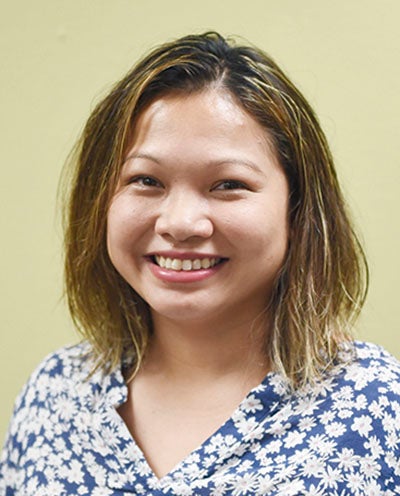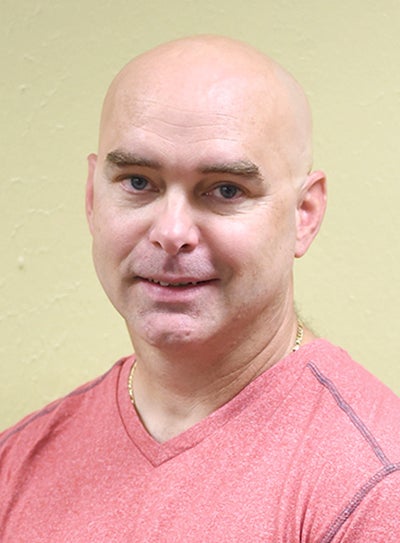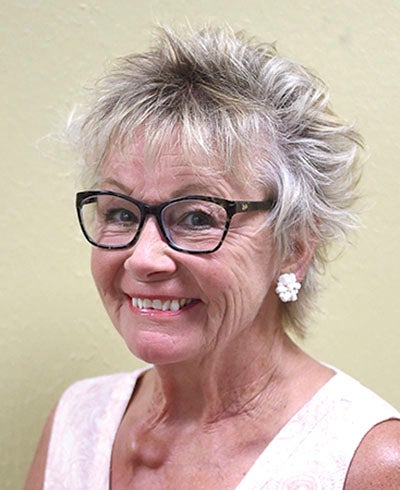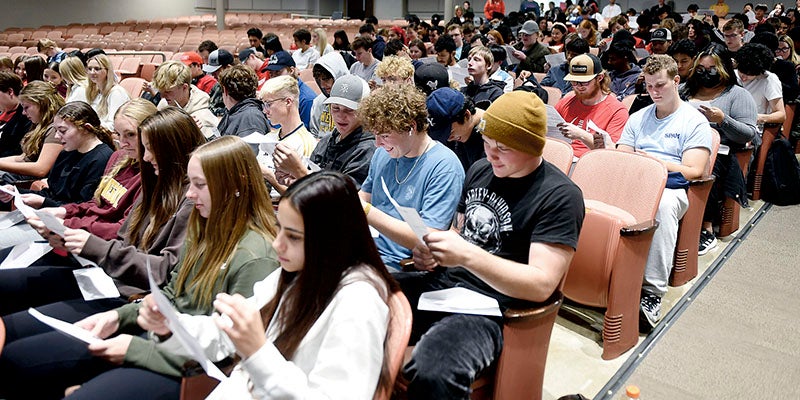Final 3 board members touch on referendum, participation fees
Published 7:01 am Saturday, September 26, 2020
|
Getting your Trinity Audio player ready...
|
Editor’s Note: This is the third part of a Q&A featuring Austin School Board candidates on issues facing the school district.
This week are Varinh Van Vugt, Ryan Norton and Katie Ulwelling.
1. The school board has given the green light for putting an operating levy referendum on the Nov. 3 ballot. How do you sell the need for the referendum to the public?

Varinh Van Vugt
Varinh Van Vugt: Education is grossly underfunded in the country and the added cost of responding to COVID hasn’t helped. Austin Public Schools has been able to keep operating costs low at $42 per student per year when the average in the Big 9 is $857. The increase of $505 per student would still place APS on the low end.
The levy would increase operating funding to $1.45 million and, through state equalization aid, the district would gain another $1.38 million. However, in order to receive the equalization aid the levy must pass. That increase in funding would lessen the stress on the district to find ways to save on costs. These cost saving measures include staff reduction, larger class sizes and less program offerings to students. It is a lot to ask of taxpayers right now, especially with the pandemic affecting the livelihood of so many. What APS is asking is that you invest in our children and neighbors. If there is one thing I’ve learned from living in Austin, it’s that you’ve got to put your money where your heart is.
Ryan Norton: While there is certainly a need for an increase in per pupil funding to maintain our current programming over the long term, I also understand the timing of this referendum is not ideal with the economic impacts of the pandemic still occurring. Many are understandably concerned with their own financial situation.
The one thing about an operating referendum is that it’s not just something for the “here and now.” A referendum secures stability for the future. While it can be concerning to some to support right now, I think it is important to consider the future of the district

Ryan Norton
further down the road as we each consider our choice and the impact it will have years from now.
Our district last asked voters to approve a referendum in 2003, which indicates to me that our district has been fiscally responsible in operating. That said, we are still the lowest funded district per pupil in the Big 9 and well under the state average. We can’t continue to operate into the future at the current level without unfortunate impacts to staffing or services.
The district has published a detailed amount of information on their website and Facebook page to inform voters of the referendum and its impact to taxpayers. I urge voters to learn more about the request by visiting these sites.
Katie Ulwelling: As a candidate for the school board, my slogan is “Listen, Learn, Lead.” I encourage all the stakeholders in our wonderful city to do just that. Please go to the Austin Public Schools website and click on “Referendum 2020.” Listen to the brief video explaining the need for the referendum. Explore the links to a more in-depth presentation, a property tax impact estimator, and FAQs.
Upon visiting the website, I learned that Austin’s operating budget currently sits at $42.70 per student. Closest to us in the Big 9 is Mankato. Their per student allotment is $454.68. That we rank lowest in the Big 9 surprised and saddened me.

Katie Ulwelling
I then went to the property tax impact estimator and entered the value of my home. I learned that the monthly increase in my property taxes would be a mere $9.05 per month. I can easily find that amount in my monthly budget by giving up one meal at a fast food restaurant.
In the FAQ section, and after visiting with the district’s Director of Finance, I also learned that if we pass this referendum, the state will contribute 49 percent of what we need in what is called “state equalization aid.” That’s an important bonus.
I would now like to lead the Austin community. Please vote to pass the proposed operating referendum. Let’s ensure that our students continue to get the best education we can offer. They are, after all, OUR future.
2. The Minnesota State High School League recently announced a 300 percent hike in fees for schools, largely to try and cope with a budget deficit. How does the district work with this to ensure students are still able to participate in all APS extracurricular activities, whether that be basketball or choir?
Van Vugt: The increase in membership to MSHSL is a difficult yet necessary expense to ensure APS students have the ability to be involved with the activities they are passionate about. Participation in extracurricular activities can improve academic performance. It is important that the district work to offer participation at a low cost to students. The district should look to creative partnerships in the community and apply for grants to help offset the cost hikes.
Norton: Our district offers a great variety of athletic and extracurricular activities that enrich the learning of our youth. We have highly dedicated, well-respected coaches and advisors working with our students inside and outside of the classroom. Maintaining these programs is essential.
The MSHSL oversees and coordinates athletics and extracurricular activities that our students participate in, so membership with the league is important. However, continued financial strain faced by the MSHSL could impact districts not only this year, but into the future as well. That said, MSHSL is actively working on improvements to better secure their financial future by looking at their funding structure. The hope is that the current increase in fees facing districts this year will not be a continued event as the league stabilizes. On the positive side, the overall impact of our membership within our own district’s budget is fairly minimal. We will be able to work with the current increase in fees, although our district will need to continue to carefully plan so that we can continue to appropriate funds for this into the future should additional increases occur.
Increasing participation fees to students and cutting back programming are two things most people become concerned with, yet with proper budgeting, we have the ability to absorb the league’s increase without passing it along to participants.
Ulwelling: The coronavirus has impacted all aspects of our lives, including the world of high school extracurricular activities. In that world, for example, Minnesota high school sports seasons have been shortened and no state tournaments have been budgeted for in 2020-21. Without the sizable profit from state tournaments, the league needs to find other funds. Thus, the increased fees for districts across the state.
The increase in fees for Austin Public Schools this year equals $9,000. According to the APS Activities Director and our Director of Finance, the proposed solution to this challenge comes in the form of an Elementary and Secondary Schools Emergency Relief (ESSERS) Grant. ESSERS funds are available to help K-12 educational entities prevent, prepare for, and respond to impacts of COVID-19. The ESSERS program is part of the Coronavirus Aid, Relief, and Economic Security (CARES) Act, which was signed into law on March 27, 2020. The increase in our membership fee is an eligible expense. The Director of Finance expects the grant application to be completed by Sept. 25.
The MSHSL fee being referred to is a membership fee for each district to the MSHSL. It is a General Fund expense and does not impact what we set for sports or other extracurricular activity fees for our students.
3. Even though student enrollment has stalled, there are indications enrollment could start climbing again. How should the board handle any space issues in the district that could arise should enrollment start climbing again? Does it include renovations or even a new school?
Van Vugt: The board should handle space issues according to the recommendations from administration. However, that doesn’t mean that the board should just go along with a request. The board should understand where the increase in enrollment comes from and how it affects the students. Is the enrollment spike just at one school or will it follow an entire class through 12th grade? The board should consider many options to find what suits the needs of the district. That may include consolidating schools and expanding another, continuing a lease or building a new school.
Norton: The majority of the buildings in our district are older and have served us well through the years. Necessary upgrades and renovations have been made over the years to our buildings to keep them sustainable. However, as time passes, it sometimes becomes more expensive to make those retrofits to old buildings. We can take pride in the longevity we have been fortunate to maintain, but that may not be the case indefinitely.
Careful consideration will need to be made with the future direction of our facilities and possible re-alignment of how we use our spaces. Requirements placed on us at the state level also have a direct impact on how space is utilized now compared to years ago.
Community focus groups have been used in the past to review our building situation and present recommendations based on their findings and research. Ultimately it is not the Board’s decision, rather the citizens. Currently, our Community Learning Center is housed in a leased space which does not adequately fit the needs of their programming and the facility up-keep continues to present costs to the district; however, voters recently turned down a request to move our CLC to a new building of its own. Over the years, learning styles have changed and our buildings have not been able to fit the needs of modern instruction and learning. We need to continue to invest in research and evaluation of all of our spaces, involving all stakeholders, to find the best fit for our learners.
Ulwelling: It is always hard to deal in hypotheticals, but I will do my best to answer.
Since Mr. Krenz became the superintendent of Austin Public Schools, he always requested the formation of a “facility committee” to review facility needs. Each time, the committee included parents, students, staff and administrators. They reviewed the needs under consideration, brainstormed possible solutions and then proposed a variety of possibilities to meet the needs.
Such a committee was in place prior to the construction of the state-of-the-art IJ Holton Intermediate School. Such a committee was in place prior to the defeat of the referendum to make additions and renovations to the Woodson Kindergarten Center. Although our community didn’t always follow the recommendations of the committee, the input from the committee itself was critical in the decision-making process. In my opinion, the formation of such committees would be a wise and cost-effective way to handle the challenges that might come with changes in student enrollment.
In a perfect world, there would be unlimited funds to meet the seemingly unlimited demands of a school district. Unfortunately, we do not live in a perfect world, so we need to continually determine our priorities. It is important to remember that our first priority must always be the education, health, and safety of our students. Sometimes this might mean renovations to an existing building. Sometimes it might even mean a new school.





